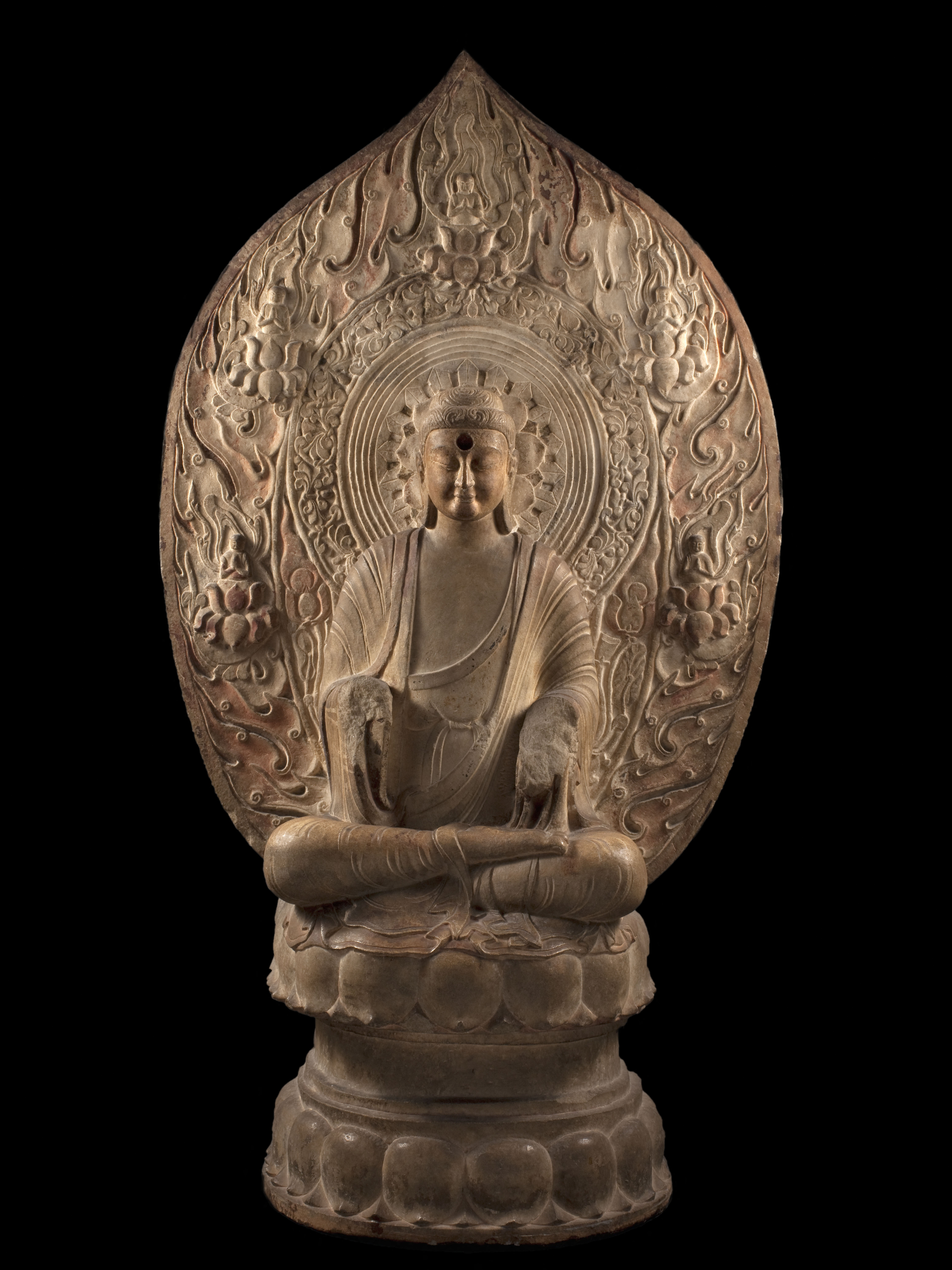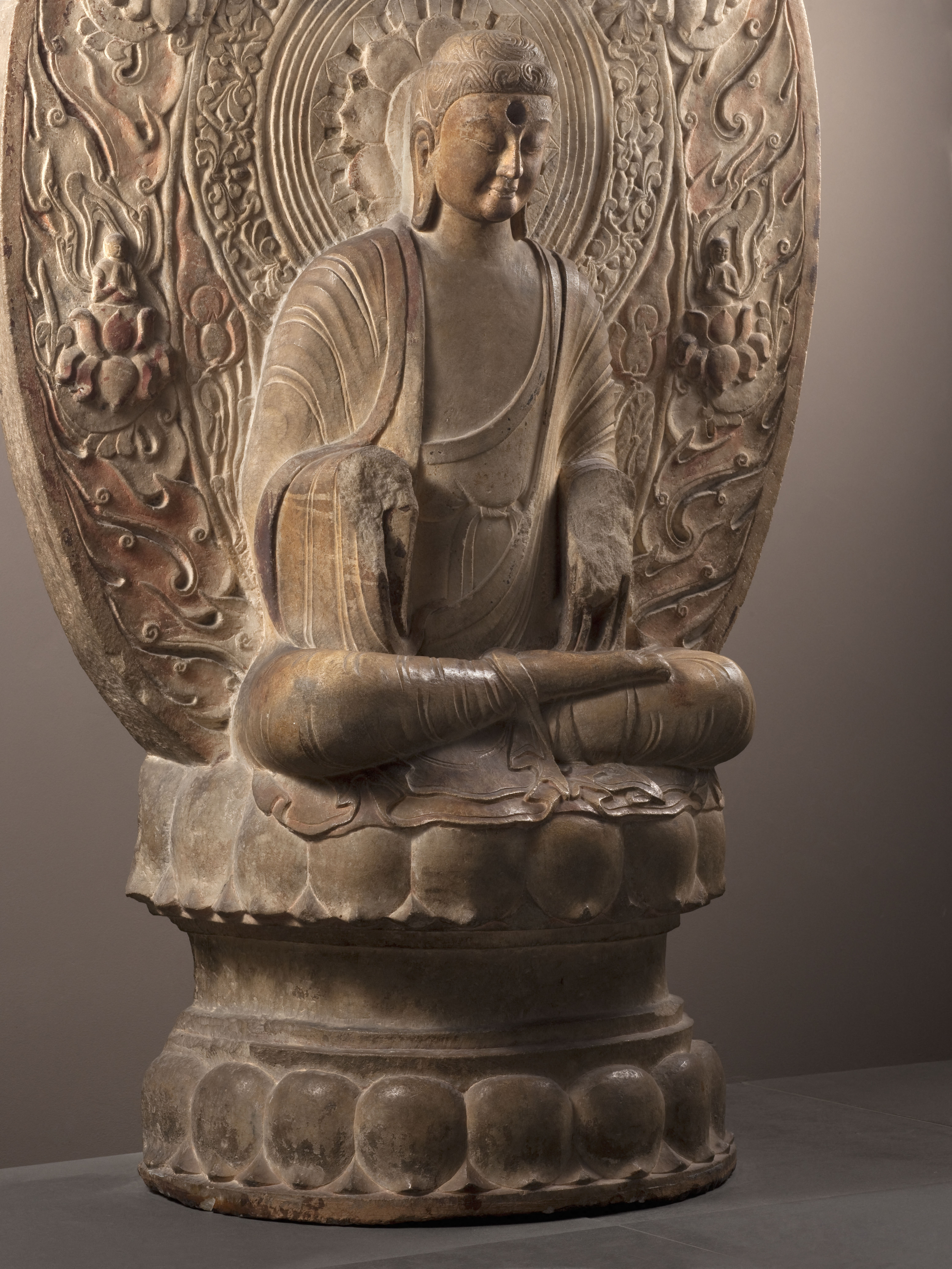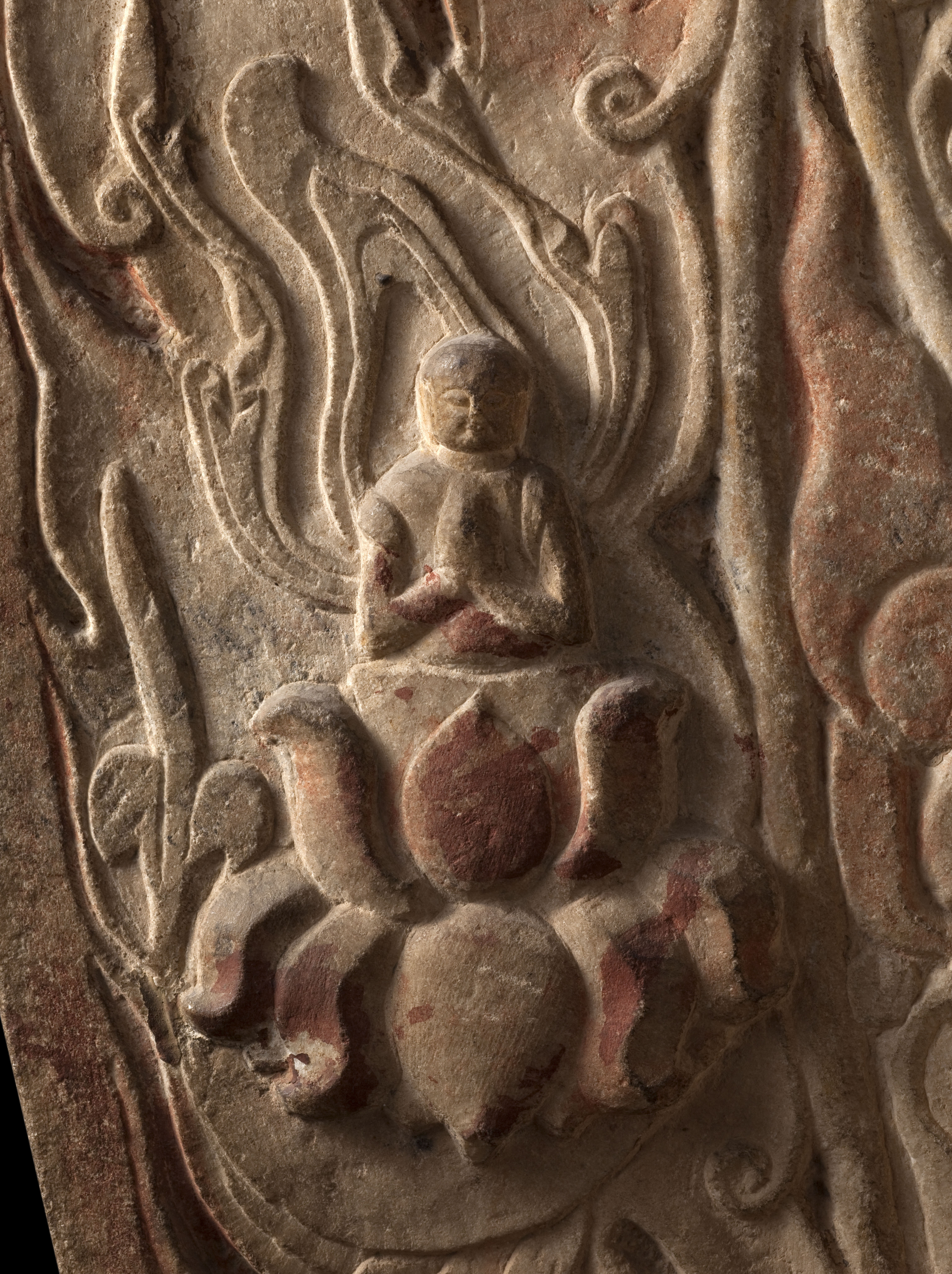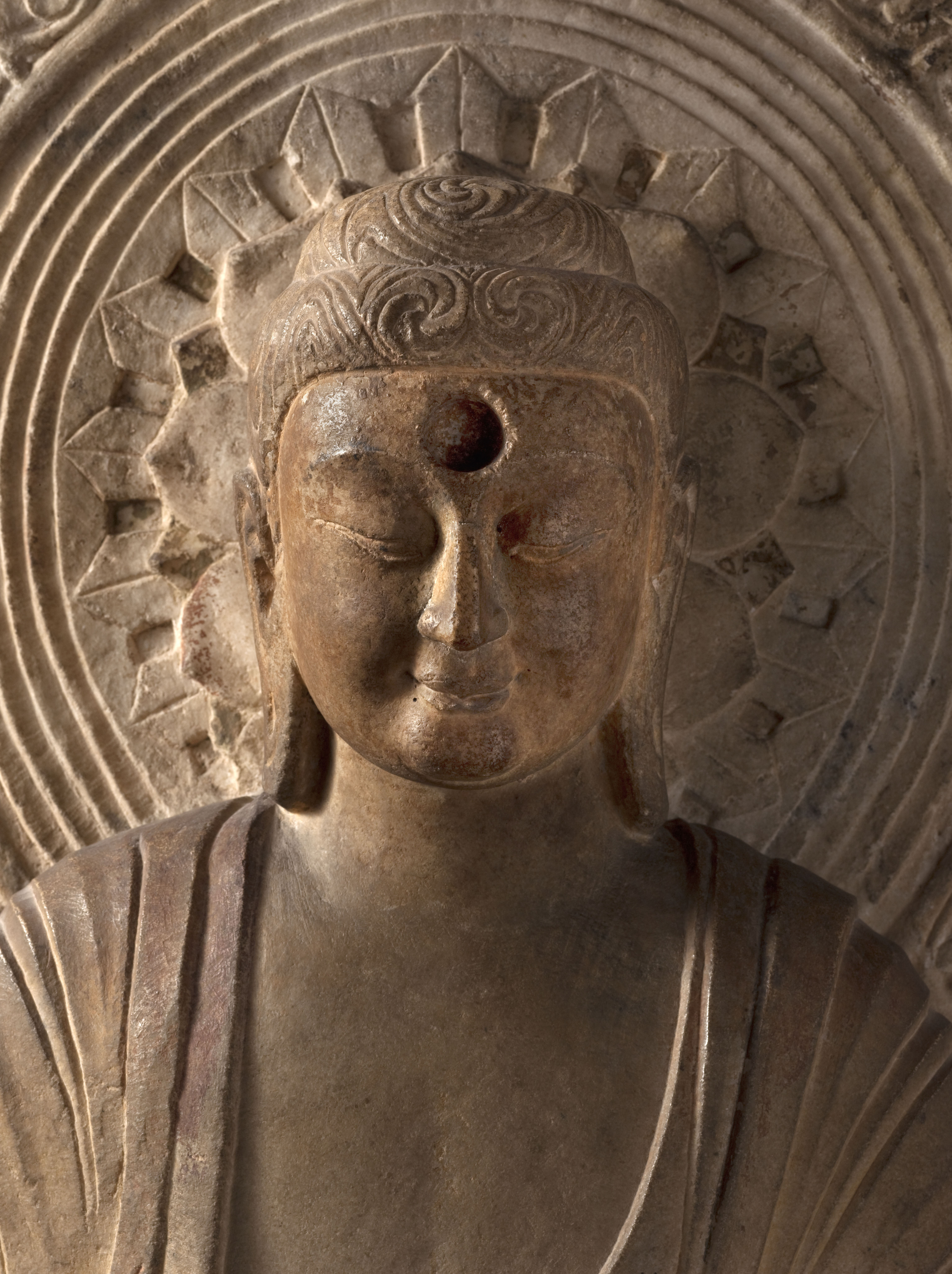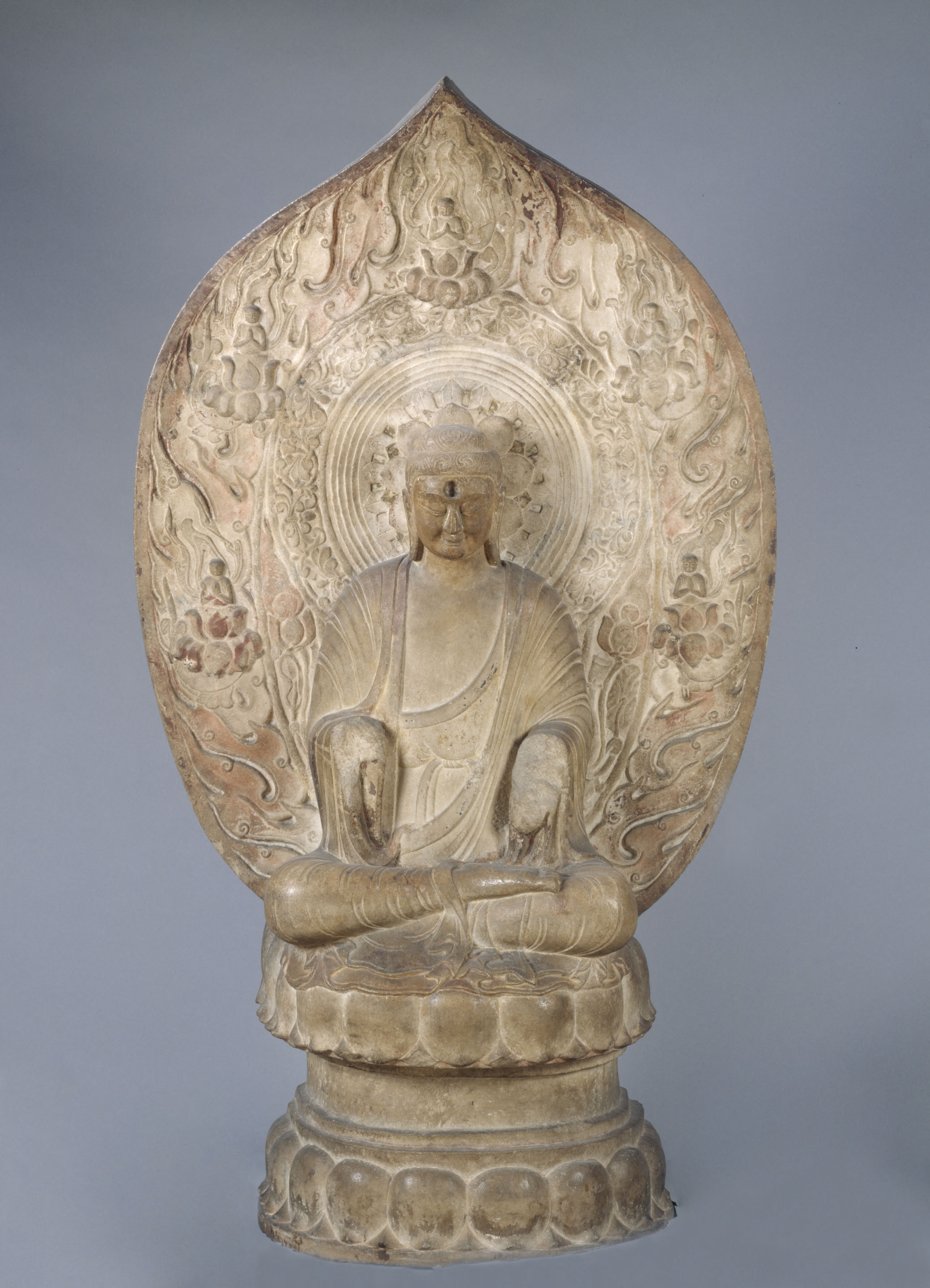
Buddha Amitābha
Marbre, Polychromie
Statue
Don manuel : Wannieck, Marie-Madeleine
M.C. 8763
Although the hands have broken off, the position of the forearms suggests that the deity was making a ritual gesture specific to the Far East, the right hand raised in “discourse” and the left dispensing charity. The combination of these two gestures (yin) is called laiying in China, meaning “welcome”, and often replaces the sign of teaching in Far Eastern Buddhist iconography.
Around the Buddha, five small children at prayer emerge from lotus flowers. This motif evokes the theme of rebirth in Sukhavati, the “Pure Land of Bliss”, the Western Paradise of the Buddha Amitabha (Amida).
While its style evokes the spare aesthetic of the Northern Qi (550-577), it is here contextualised in an ancient-style work of the Liao period (907-1125) in north-west Hebei, in the regions of Juyang and Dingzhou.
